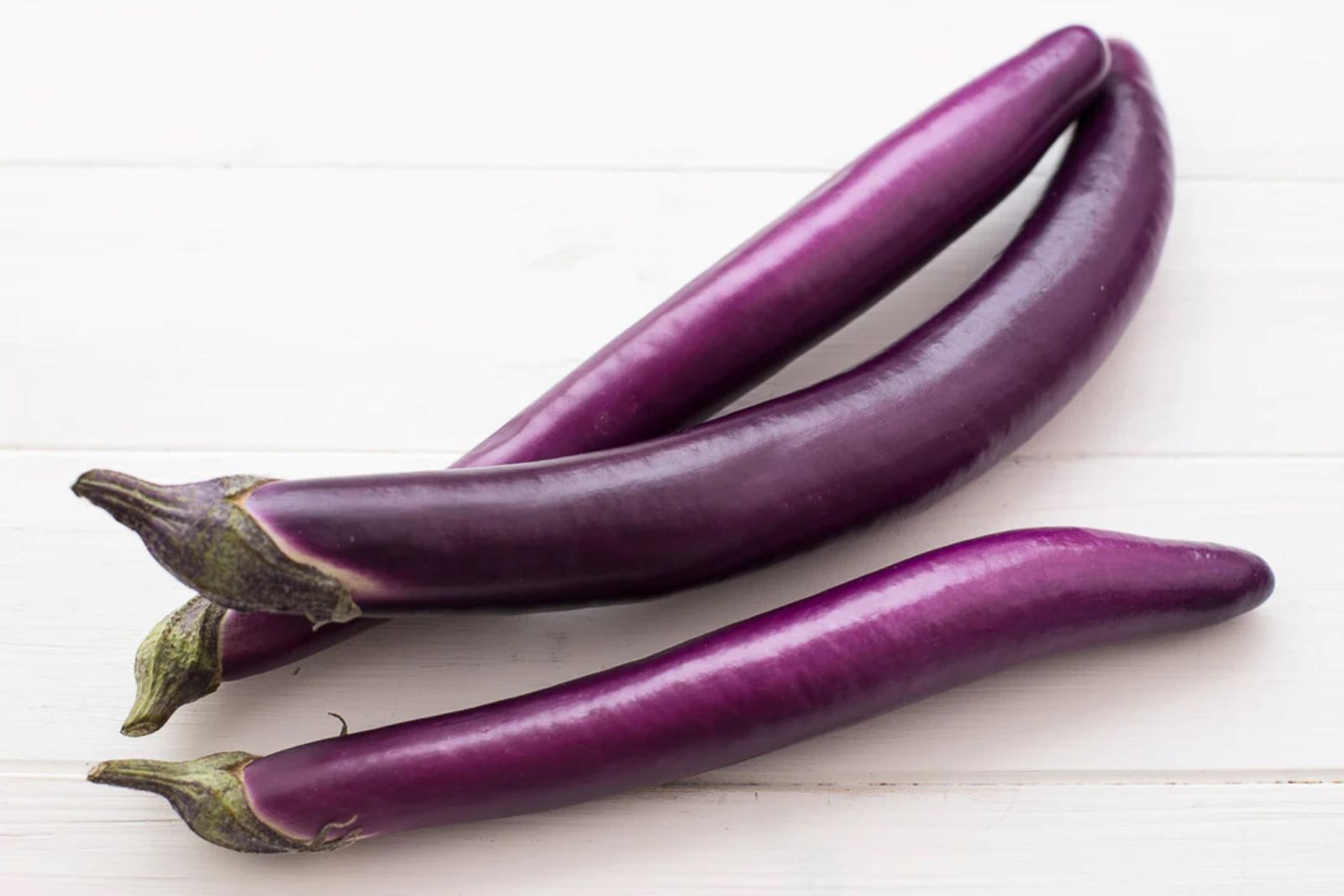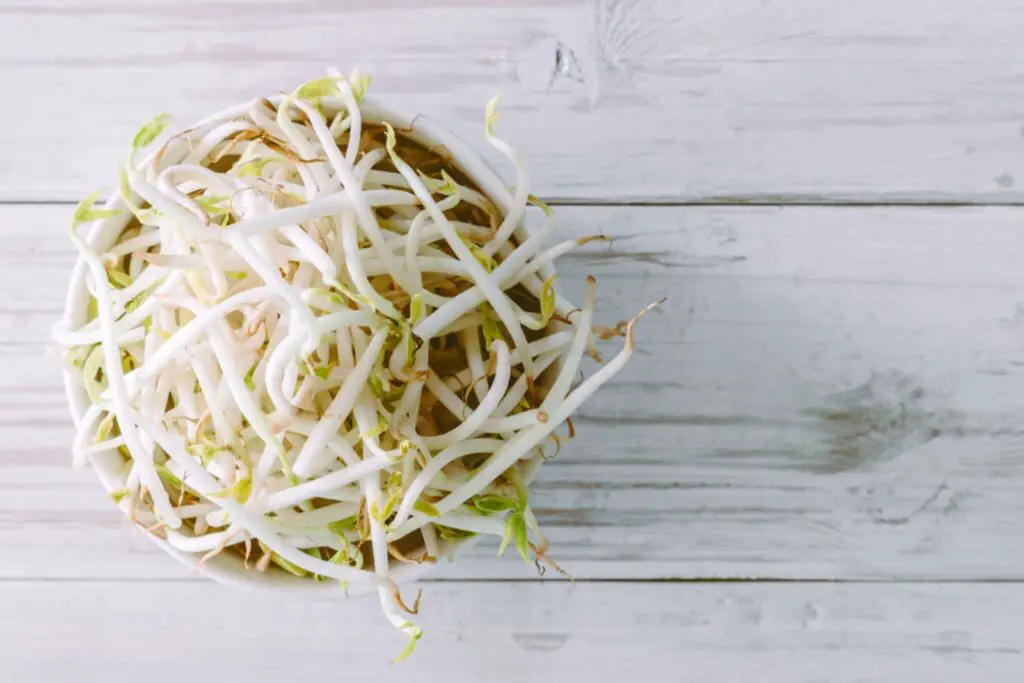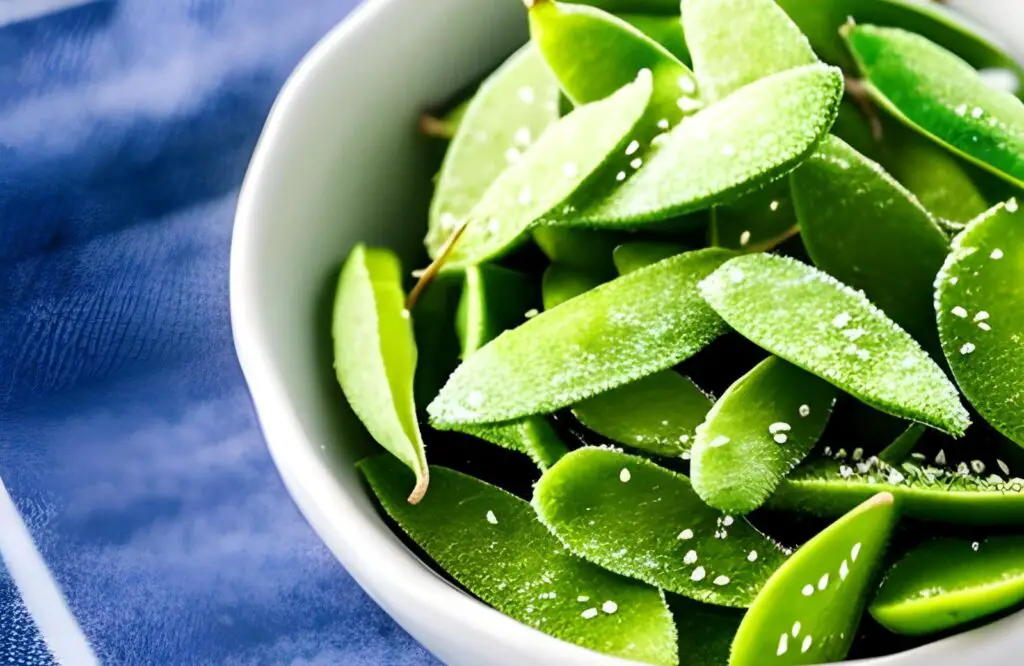
Japanese eggplants are slender and elongated vegetables that are commonly used in Asian cuisines. They have a mild and slightly sweet flavor, making them a versatile ingredient in various dishes. If you have an abundance of Japanese eggplants or want to preserve them for future use, freezing is a great option. Freezing Japanese eggplants will help maintain their texture and flavor, allowing you to enjoy them even when they are not in season. This article provides a step-by-step guide on how to freeze Japanese eggplants to ensure their optimal quality when you’re ready to use them.
Here’s a guide on how to freeze Japanese eggplants:
- Step 1: Select fresh Japanese eggplants
- Step 2: Wash and trim the eggplants
- Step 3: Blanch the eggplants
- Step 4: Cool and drain the eggplants
- Step 5: Cut into desired shapes
- Step 6: Arrange the eggplants for freezing
- Step 7: Flash-freeze the eggplants
- Step 8: Package and seal the eggplants
- Step 9: Label and date the packages
- Step 10: Store in the freezer
Step 1: Select fresh Japanese eggplants
Choosing fresh Japanese eggplants is essential to ensure the best results when freezing them. Here’s why:
- Texture and flavor: Fresh Japanese eggplants have a firm and crisp texture, which is important for maintaining their quality during the freezing process. When frozen, the texture of the eggplants may slightly change, but starting with fresh ones will help preserve their desirable texture even after thawing. Additionally, fresh eggplants have a vibrant flavor that will be better preserved when frozen.
- Quality preservation: Eggplants that are free from blemishes or signs of decay are less likely to spoil during freezing. Blemishes or soft spots can indicate the presence of rot or mold, which can spread to other parts of the eggplant and affect its taste and texture. By selecting fresh eggplants, you minimize the risk of ending up with subpar results after freezing.
- Nutritional value: Fresh vegetables, including Japanese eggplants, are rich in vitamins, minerals, and antioxidants. Freezing them while they are fresh helps retain their nutritional value. As the freezing process slows down the degradation of nutrients, you can enjoy the benefits of these nutritious vegetables even when they are out of season.
To select the best Japanese eggplants for freezing, look for those that are firm to the touch and have smooth, unblemished skins. Avoid eggplants with soft spots, discoloration, or signs of rotting. It’s also beneficial to choose eggplants that are relatively young, as they tend to be less bitter compared to older ones.
Step 2: Wash and trim the eggplants
Washing and trimming the Japanese eggplants before freezing is an important step to ensure cleanliness and remove any unwanted parts. Here’s why it’s necessary:
- Removing dirt and debris: Japanese eggplants, like any other vegetables, can accumulate dirt, dust, or other residues during transportation and storage. Giving them a thorough rinse under cold water helps remove any surface contaminants, ensuring that you freeze clean and hygienic eggplants.
- Hygiene and food safety: Washing the eggplants reduces the risk of introducing bacteria or pathogens into the freezer. While freezing can inhibit bacterial growth, it doesn’t eliminate them entirely. By washing the eggplants, you minimize the chances of bacterial contamination and maintain food safety.
- Trimming off stems and damaged parts: Trimming the stems of Japanese eggplants is necessary as they are tough and not pleasant to eat. By removing the stems, you improve the overall texture and appearance of the frozen eggplants. Additionally, inspect the eggplants for any damaged or bruised areas. Discard any parts that appear spoiled, as they can compromise the quality of the entire vegetable during freezing and thawing.
When washing the Japanese eggplants, gently rub them with your hands or use a soft brush to remove any stubborn dirt. Pay close attention to the crevices and folds of the eggplants’ skin. Rinse them thoroughly to ensure no dirt particles remain.
For trimming, simply cut off the stems with a sharp knife. Aim to remove about half an inch to an inch from the top of the eggplants. If you notice any bruises, discoloration, or soft spots on the surface, cut them out to prevent further deterioration.
Step 3: Blanch the eggplants
Blanching is a crucial step in freezing Japanese eggplants as it helps preserve their color, texture, and flavor. Here’s why blanching is important and how to do it:
- Enzyme inactivation: Japanese eggplants contain enzymes that can cause discoloration, loss of texture, and flavor changes over time. Blanching involves briefly immersing the eggplants in boiling water, which helps inactivate these enzymes. This process slows down enzymatic reactions and preserves the overall quality of the eggplants during freezing.
- Retaining color: Blanching helps maintain the vibrant color of the Japanese eggplants. It helps to set the color pigments and prevents them from breaking down or fading during freezing. By blanching, you can enjoy visually appealing frozen eggplants that retain their attractive appearance even after thawing.
- Texture preservation: Blanching slightly tenderizes the eggplants, making them more resistant to texture changes that can occur during freezing and subsequent cooking. It helps to retain a desirable texture, preventing the eggplants from becoming mushy or overly soft when used in dishes after thawing.
To blanch the Japanese eggplants, follow these steps:
- Bring a pot of water to a rolling boil. The pot should be large enough to accommodate the eggplants comfortably.
- Carefully place the washed and trimmed eggplants into the boiling water. Use tongs or a slotted spoon to avoid any burns from the hot water.
- Allow the eggplants to cook in the boiling water for about 3 to 4 minutes. The exact time may vary depending on the size and thickness of the eggplants. Aim for a slight tenderness, ensuring they are not fully cooked.
- To check for doneness, pierce the eggplants with a fork or the tip of a knife. They should be slightly tender but still hold their shape.
- Once blanched, promptly remove the eggplants from the boiling water and transfer them to a bowl of ice water. This step halts the cooking process and helps cool down the eggplants rapidly.
Blanching time should be kept relatively short to avoid overcooking the eggplants. If blanched for too long, they may become mushy and lose their texture.
Can I freeze Japanese eggplants without blanching them first?
Blanching Japanese eggplants before freezing is highly recommended to preserve their quality. Blanching helps retain their color, texture, and flavor while also inhibiting enzyme activity that can cause deterioration during storage.
Step 4: Cool and drain the eggplants
After blanching Japanese eggplants, it’s important to cool them down quickly and drain them thoroughly. Here’s why this step is necessary and how to do it effectively:
- Halting the cooking process: Transferring the blanched eggplants to a bowl of ice water helps rapidly cool them down. This step is essential to stop the cooking process, preventing the eggplants from becoming overcooked and losing their desired texture and color.
- Retaining texture and color: Cooling the eggplants in ice water helps set their texture and preserves their vibrant color. The rapid temperature change from hot to cold helps maintain the firmness and crispness obtained through blanching. It also helps lock in the color, preventing further enzymatic reactions that could lead to discoloration.
- Removing excess heat: The ice water bath quickly removes the residual heat from the blanched eggplants. This helps ensure that the eggplants are cool enough to handle and proceed with further freezing steps without causing any damage or unnecessary moisture accumulation.
To cool and drain the blanched Japanese eggplants, follow these steps:
- Prepare a bowl filled with cold water and add a generous amount of ice cubes.
- Using a slotted spoon or tongs, carefully transfer the blanched eggplants from the boiling water to the ice water bath. Submerge them completely in the icy water.
- Allow the eggplants to sit in the ice water for a few minutes until they are completely cooled. Gently stir them in the water to ensure even cooling.
- Once cooled, remove the eggplants from the ice water and transfer them to a colander or a clean kitchen towel to drain. Allow any excess water to drip off.
- To ensure thorough drainage, gently pat the eggplants with a kitchen towel to remove any remaining moisture.
Step 5: Cut into desired shapes
Once the blanched and cooled Japanese eggplants are ready, you have the option to freeze them either as whole eggplants or in smaller, more convenient pieces. Here’s why cutting them into desired shapes is beneficial and some common options:
- Improved convenience: Cutting Japanese eggplants into smaller shapes allows for easier handling and portioning when it comes to using them later on. Depending on your intended use, having pre-cut pieces can save time and effort in the kitchen, especially if you plan to incorporate them into recipes that require specific shapes or sizes.
- Versatile usage: By cutting the eggplants into desired shapes, you have more flexibility in how you use them. Slicing them into rounds or lengthwise strips opens up a variety of possibilities. Rounds can be used in stir-fries, curries, or stews, while lengthwise strips are ideal for grilling, roasting, or as ingredients in sushi rolls.
- Enhanced freezing and thawing process: Smaller cut pieces freeze and thaw more quickly and evenly compared to whole eggplants. This ensures that the freezing process is efficient and helps to maintain the texture and quality of the eggplants during thawing. It also allows for easier portion control if you only need a portion of the eggplants for a particular recipe.
When cutting the blanched and cooled Japanese eggplants, consider the following options:
- Rounds: Slice the eggplants crosswise into round discs of desired thickness, typically ranging from 1/4 inch to 1/2 inch. This shape works well in dishes where the eggplants will be cooked or simmered, as they absorb flavors and become tender.
- Lengthwise strips: Slice the eggplants lengthwise into thin strips or planks. These can be further cut into smaller lengths if desired. Lengthwise strips are great for grilling, roasting, or sautéing, as they provide a larger surface area for caramelization and a slightly firmer texture.
- Cubes: Cut the eggplants into small cubes, typically around 1-inch in size. Cubes are versatile and can be used in various dishes, such as soups, stews, or stir-fries. They cook relatively quickly and distribute evenly in recipes.
Remember to use a sharp knife to ensure clean and precise cuts. Additionally, it’s important to consider the size and thickness of the cuts based on your personal preference and the specific recipes you plan to use the frozen eggplants in.
Step 6: Arrange the eggplants for freezing
Once you have cut the blanched Japanese eggplants into desired shapes, it’s important to arrange them properly for freezing. Follow these steps to ensure optimal freezing results:
- Single layer arrangement: Place the cut eggplants in a single layer on a baking sheet lined with parchment paper or a silicone mat. This arrangement allows for even freezing and prevents the eggplants from sticking together. By ensuring they are not touching each other, you make it easier to separate individual pieces when needed.
- Even spacing: Leave some space between each piece of eggplant on the baking sheet. This allows for proper air circulation during freezing and helps maintain consistent freezing temperatures around the eggplants. Adequate air circulation ensures that the eggplants freeze quickly and uniformly, preserving their texture and quality.
- Sticking prevention: By arranging the eggplant pieces in a single layer with space between them, you minimize the chances of them sticking together during freezing. If the pieces come into contact, they may freeze together, making it difficult to separate them later. This step ensures that each piece remains separate and easily accessible, allowing you to take out only the desired amount when needed.
- Baking sheet choice: Use a sturdy and flat baking sheet that fits in your freezer. This will provide a stable surface for the eggplants and prevent any deformation or damage during freezing. The parchment paper or silicone mat prevents the eggplants from sticking to the surface of the baking sheet.
Once you have arranged the cut eggplants on the baking sheet, place the sheet in the freezer and allow the eggplants to freeze until they are solid, which typically takes a few hours. Freezing them individually in a single layer ensures that they maintain their individual shapes and are easy to handle and store.
Step 7: Flash-freeze the eggplants
After arranging the cut Japanese eggplants in a single layer on a baking sheet, the next step is to flash-freeze them. Flash-freezing refers to rapidly freezing the individual pieces before transferring them to freezer bags or containers. Here’s why this step is crucial and how it benefits the freezing process:
- Preventing clumping: Flash-freezing the eggplants individually ensures that they freeze separately without sticking or clumping together. By freezing them individually on the baking sheet, you create a barrier between the pieces, reducing the chances of them freezing in a solid block. This makes it easier to retrieve and use only the desired amount of eggplants later on.
- Preserving quality: Flash-freezing helps maintain the texture and quality of the eggplants. By freezing them quickly, you minimize the formation of large ice crystals, which can lead to cellular damage and affect the overall texture and flavor of the eggplants. Flash-freezing helps preserve the freshness and taste of the eggplants for an extended period.
- Facilitating portion control: Flash-freezing the eggplants individually allows for better portion control when it comes to using them in recipes. By freezing them separately, you have the flexibility to take out only the amount you need, without having to thaw the entire batch. This can be particularly helpful when preparing smaller-sized dishes or meals for individual servings.
To flash-freeze the arranged Japanese eggplants, follow these steps:
- Transfer the baking sheet with the arranged eggplants to the freezer. Make sure the sheet is placed on a level surface to prevent any tilting or shifting of the eggplants during freezing.
- Allow the eggplants to freeze for a few hours until they are firm to the touch. The exact freezing time may vary depending on the thickness of the eggplants and the efficiency of your freezer.
Step 8: Package and seal the eggplants
After flash-freezing the Japanese eggplants, it’s time to package and seal them properly to ensure their long-term quality and protection in the freezer. Follow these steps to package and seal the frozen eggplants effectively:
- Choose freezer-safe packaging: Transfer the flash-frozen eggplants into freezer-safe bags or airtight containers specifically designed for freezing. These containers are made from materials that are resistant to low temperatures and are less prone to freezer burn.
- Portioning: If you have cut the eggplants into smaller pieces, you may choose to portion them into smaller quantities based on your anticipated usage. This allows you to conveniently thaw and use the desired amount without having to defrost the entire batch.
- Remove excess air: Before sealing the packaging, try to remove as much air as possible. Excess air in the packaging can contribute to freezer burn, which can affect the quality and taste of the frozen eggplants over time. You can use a vacuum sealer or the manual method to extract air from freezer bags, or press down gently on the containers to push out any trapped air before sealing.
- Seal tightly: Once you have removed excess air, seal the freezer bags or containers tightly to prevent air from entering and freezer burn from occurring. Ensure that the seals are secure and leak-proof to maintain the optimal freezing conditions.
Proper packaging and sealing are essential to protect the frozen eggplants from freezer burn, which is the result of moisture loss and exposure to air. Freezer burn can lead to changes in texture, flavor, and overall quality of the eggplants. By minimizing air and providing airtight seals, you create a barrier that helps maintain the freshness and taste of the eggplants during their time in the freezer.
Step 9: Label and date the packages
After packaging and sealing the frozen Japanese eggplants, it’s important to label each package with the date of freezing. This simple step helps you keep track of their freshness and ensures that you use them in the proper order. Here’s why labeling and dating the packages is beneficial:
- Freshness tracking: By clearly indicating the date of freezing on each package, you have a reference point for how long the eggplants have been in the freezer. This information is crucial for maintaining their quality and ensuring that you consume them within a reasonable timeframe. It allows you to prioritize using the oldest packages first to minimize any potential loss in flavor or texture.
- Rotation management: Labeling and dating the packages enable you to practice proper rotation management in your freezer. As new batches of frozen foods are added, it’s essential to organize them in a way that ensures older items are used before newer ones. This helps prevent freezer burn and ensures that all the frozen items, including the Japanese eggplants, are used in a timely manner.
- Convenience and planning: Knowing the date of freezing allows you to plan your meals or recipes accordingly. If you have a clear overview of when the eggplants were frozen, you can factor that into your meal planning, ensuring you utilize them while they are at their best quality. This information saves you time and effort by avoiding unnecessary thawing and refreezing of unused portions.
To label and date the packages:
- Use a marker or labels: Choose a marker that is suitable for writing on the packaging material, such as a permanent marker. Alternatively, use labels that adhere well to the freezer bags or containers.
- Write the date: On each package, clearly write the date of freezing. Include the day, month, and year to provide accurate information about when the eggplants were frozen.
- Placement: Place the label or write the date in a visible and easily accessible area of the package, such as the front or top. This allows you to quickly identify the date without having to search through multiple packages.
Step 10: Store in the freezer
After labeling and dating the packages of Japanese eggplants, it’s time to store them in the freezer for long-term preservation. Proper storage ensures the maintenance of quality and allows for easy retrieval when needed. Here’s how to store the frozen eggplants effectively:
- Freezer placement: Find a suitable spot in your freezer to store the sealed packages of Japanese eggplants. Ideally, choose a section or shelf with a consistent and stable temperature. Avoid placing them near the freezer door or in areas where they may be subject to temperature fluctuations due to frequent opening and closing of the freezer.
- Easy retrieval: Arrange the packages in a way that allows for easy retrieval. Consider organizing them in a single layer or stack them neatly, depending on the available space and the quantity of packages. Ensuring easy access to the packages minimizes the chances of accidentally damaging or disturbing other items in the freezer.
- Proper insulation: Make sure the packages are well-insulated within the freezer. Avoid placing them directly against the freezer walls, as this can lead to uneven freezing and potential exposure to colder temperatures. Maintaining a consistent freezing environment around the eggplants helps preserve their quality and minimizes the risk of freezer burn.
- Storage duration: Japanese eggplants can be stored in the freezer for up to six months. However, it’s important to note that the longer they are stored, the more their quality and flavor may deteriorate. To ensure the best taste and texture, it’s recommended to use the frozen eggplants within the first few months of freezing.
It’s worth mentioning that the storage duration mentioned above is a general guideline, and the quality of the frozen eggplants may vary depending on factors such as the initial freshness of the eggplants, the efficiency of your freezer, and the packaging methods used. Always use your judgment and sensory evaluation to determine if the frozen eggplants are still suitable for consumption beyond the recommended storage period.
Other related questions
How do I defrost Japanese eggplants?
To defrost Japanese eggplants, transfer them from the freezer to the refrigerator and allow them to thaw slowly overnight or for several hours. Alternatively, you can use the defrost function of your microwave, following the manufacturer’s instructions and checking the eggplants periodically to avoid overcooking. Once thawed, handle them carefully as they may become more delicate, and use them promptly in your desired recipe.
Can I refreeze Japanese eggplants?
No, it is generally not recommended to refreeze Japanese eggplants once they have been thawed. Refreezing can lead to a loss of texture, flavor, and overall quality of the eggplants. It is best to use them after they have been thawed and cooked or consume them in their thawed state.
How do I know if the Japanese eggplants have gone bad after being frozen?
After being frozen, if Japanese eggplants develop an off-putting odor, unusual discoloration, or a slimy texture, they may have gone bad. Additionally, if there are signs of freezer burn, such as dry and discolored patches, the quality may have significantly deteriorated. It is advisable to use your senses and discard the eggplants if they exhibit any of these spoilage indicators.
Can I freeze Japanese eggplants after cooking them?
While it is possible to freeze cooked Japanese eggplants, their texture may change after thawing. It is often best to freeze them before cooking for optimal results, allowing you to prepare them in various recipes upon thawing.
Can I freeze Japanese eggplants if they have been previously refrigerated?
Yes, you can freeze Japanese eggplants that have been previously refrigerated. However, keep in mind that the quality may slightly deteriorated compared to freezing them when they are fresh. It is best to freeze them as soon as possible after refrigeration for better results.
Can I freeze Japanese eggplants if they have been stuffed or filled with other ingredients?
Yes, you can freeze Japanese eggplants that have been stuffed or filled with other ingredients. However, keep in mind that the texture of the filling may change slightly after freezing and thawing. Consider the overall compatibility of the filling with freezing and adjust the recipe if necessary.








